Page 2 of 2. Go to Page 1
General Performance
With a Core i7, 8GB of RAM and a 256GB SSD you’d expect this version of the XPS 12 to perform and in general, it does very well. The SSD is as spritely as it should be and there are a smattering of performance treats all over the place. A great screen, decent built-in audio and a fan that’s not too loud although it’s certainly not silent under load. The WiFi, a critical part for most people, is a performer too. Dell have taken care that there are no big bottlenecks in the hardware and in the build we have here there’s very little extra software pre-installed so you can be sure that you’re getting the most out of your XPS 12, whatever CPU you choose.
Audio Performance
We enjoyed the built-in speakers of the Dell XPS 12 although had to tune the Audio Maxx processing software to get the best out of it for our ears. Dell have done a good job here. Analogue audio is available via the headset port.
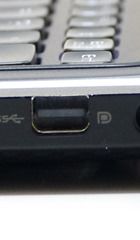 Video (external) Performance
Video (external) Performance
The Lenovo Twist (tested previously and a competitor to the Dell XPS 12) has three ways to get digital video out of the Ultrabook. The Dell XPS 12 here only has two. One is physical and one wireless. If you’re only going to have one video port the Mini DisplayPort is the best choice to have as it offers the highest potential performance. On the other hand, if you need VGA or HDMI you’ll have to buy adapter cables which if lost means you have no performance at all! The Dell XPS 12 supports WiDi (Wireless Display) through the Centrino Wifi module.
Video (Internal) Performance
Background on Ivy Bridge Ultrabook video performance:
The video playback capabilities of PCs have three limiting factors. CPU, video decoding hardware and software codecs. Windows 7 provides a good set of software codecs out of the box and supports most hardware video decoders. MPEG2, MPGEG4 part 2 (like Xvid, Divx) and MPEG 4 part 10 (like H.264) along with WMV of course. You’ll need to download and install codecs for other types of file. Windows 8 does not support MPEG2 playback out of the box.
The HD 4000 GPU supports full HD (1080p) decoding in hardware and we tested it up to 50fps and 30Mbps which is as high as you’ll get on most consumer video cameras. In theory the chip can decode twice that much and can even handle 4K video decoding. Unfortunately we weren’t able to test that that.
At 50% brightness and ‘balanced’ battery mode the power usage averaged 12.8W which is higher than average in this category of CPU.
3DMark scores indicate that this i7, 8GB version could be one of the best choices for gaming if you are set on having an Ultrabook but it’s not going to be capable of the latest 3D shooters. Think about game of 2-3 years ago and you could have a lot of fun on the go. Be aware that under gaming-load, battery life could be under 2hrs.
WiFi Performance
More top marks to Dell. The top-of-the-range Centrino Advanced-N seems to be paired with good antennas for solid throughput. WiFi is a critical element in almost every laptop working scenario these days and customers should always make sure they choose an Ultrabook with good WiFi.
Performance Tests
All performance test done under ‘balanced’ battery power mode unless stated. SB= Sandy Bridge 2nd generation Intel Core CPU with HD 3000 graphics.
CrystalDIskMark
With a max 418MB/s read speed and 256MB/s write speed the Samsung SSD in the Dell XPS 12 is a top-of-the-range performer. Important small-block read and write speeds are also good.
3DMark 06
Dell XPS 12 (Core i7 at 1280×800) 3DMark = 4837
Previous results:
- Lenovo Ideapad Yoga 13 (Core i7) = 4506
- Lenovo Thinkpad Twist (Core i5, mains power – balanced performance mode @ 1280×768 resolution) = 4023
- Lenovo ThinkPad X1 Carbon (Core i7 at 1280×800) = 5224
- Samsung Series 9 2012 15” (Core i5 3317U, balanced battery mode) = 5112
- Lenovo U300S (Core i7 SB 1.7Ghz) high performance battery power: 3520, mains power: 3611
- Samsung Series 5 (Core i5 SB 1.6Ghz) Battery power – high performance mode: 3416
PCMark7
Dell XPS 12 (Core i7) PCMark7 = 4895
Previous Results
- Lenovo Ideapad Yoga 13 (Core i7) = 4615
- Lenovo Thinkpad Twist (Core i5, mains power – balanced mode) = 3386
- Lenovo ThinkPad X1 Carbon (Core i7) = 4832
- Samsung Series 9 2012 15” (Core i5 3317U, balanced battery mode) = 3129
- Lenovo U300s (Core i7 SB, 1.8Ghz) PCMark 3280
- Samsung Series 5 (Core i5 SB, 1.6Ghz) PCMark: 1894 (high performance, battery power.)
Cinebench 11.5 CPU Test (2 Core)
Dell XPS 12 (Core i7) = 2.7
Previous results
- Lenovo Ideapad Yoga 13 (Core i7) = 2.23
- Lenovo Thinkpad Twist (Core i5) = 2.34
- Lenovo Thinkpad X1 Carbon(Core i7) = 2.55
- Samsung Series 9 2012 15” (Core i5 3317U, balanced battery mode) = 1.68
- Lenovo U300S (Core i7 SB): 2.12 points
Cinebench 11.5 OpenGL
Dell XPS 12 (Core i7) = 15.23
Previous results
- Lenovo Yoga 13 (Core i7) = 13.44
- Lenovo Thinkpad Twist (Core i5) – 10.73
- Lenovo Thinkpad X1 Carbon (Core i7, battery balanced) = 13.73
- Lenovo ThinkPad X1 Carbon (Core i7, mains, max performance) = 15.03
- Samsung Series 9 2012 15” (Core i5 3317U, balanced mains mode) = 15.63
- Lenovo U300s (Core i7 SB 1.7Ghz) high performance mode : 8.68
Battery Life
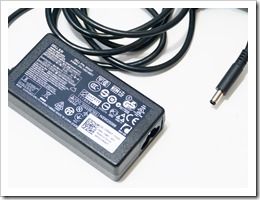 The Dell XPS 12 contains a medium-capacity 47Wh battery. Background energy usage was efficient (possibly due to a clean Windows 8 build with no additional software) and there’s a hint that the higher-clocked Core i7 is getting things done quickly and reducing the overall power usage for a given task. Unfortunately, there’s also evidence that the screen takes a considerable amount of power both in full-backlight scenarios and while displaying high-bitrate full HD videos.
The Dell XPS 12 contains a medium-capacity 47Wh battery. Background energy usage was efficient (possibly due to a clean Windows 8 build with no additional software) and there’s a hint that the higher-clocked Core i7 is getting things done quickly and reducing the overall power usage for a given task. Unfortunately, there’s also evidence that the screen takes a considerable amount of power both in full-backlight scenarios and while displaying high-bitrate full HD videos.
| Usage Scenario | Power usage | Estimated battery life (new battery) |
| Idle, no Wi-Fi, sound off, power save profile | Screen low – min 4.9W Screen High – min 9.5W |
9.5hrs 4.9hrs |
| Local MP3 playback (Using WMP, medium vol, low screen brightness | Average 7.5W | 6.2hrs |
| Streaming MP3 playback (low screen brightness, 3 walls from hotspot) | Average 8.2W | 5.7hrs |
| Web working – 50% screen, balanced power mode, 5 web applications tabs (1) | Average 9.2W | 5.1hrs |
| HD Video (Full HD, H.264, 50fps, 30Mbps) playback (WiFi Off, WMP, 50% brightness) | Average 12.8W | 3.6hrs |
(1) Chrome: Tweetdeck, Facebook, Google Plus, YouTube, Gmail
Heat and Noise
Dell have done a good job with noise-reduction and cooling. It’s possible to work, carefully, without the fan coming on at all with the Dell XPS 12 making a totally silent machine. High-end video playback and extended web-working or even just warm environments could cause the fan to come on though. It’s not an annoying fan noise though and we’re happy with the solution. Heat was present underneath the XPS 12 after running our tests but there’s no worrying heat build-up during normal use.
Issues and Notes
We had one or two issues with the touchpad and touchscreen not responding properly but this only happened once. Be aware that there may be an issue here that needs sorting out with new drivers. (We advise to check a few forums for recent entries on this point before purchasing.)
There were no other issues to report
Dell XPS 12 Target Customer
As a touchscreen Ultrabook on it’s own the Dell XPS is a high-quality choice. Build, keyboard, screen, WiFi and efficiency are close to best in class so in that respect if the Dell XPS fits your requirements for a laptop and you like what you see, buy it! Customers looking for a top-end Ultrabook won’t have many issues as long as they can cope with, or work-around the effects of having a very high resolution screen. Customers looking for value for money might want to look for a device with a bigger battery and perhaps a 1600×900 screen. There aren’t many options out there though, especially when the SSD speed and WiFi are taken into consideration. Customers looking for a tabletPC will not be impressed with the Dell XPS as in tablet mode it’s heavy and there’s no digitizer. For occasional coffee-table look-ups it’s great but customers looking for a consumer tablet may be better looking at an Atom-based (Clovertrail) tablet. Photographers and videographers will be annoyed at the lack of SD card slot and need to carry an SD card adapter and display cables. The Core i7 performs well and would have no problem replacing a desktop for most office and home usage.
Dell XPS 12 Review Summary
We went into this review a little annoyed that Dell were pushing a 1.5KG tablet but considering the quality and value using the XPS 12 purely as an Ultrabook we’re happy to say that if you want a high-quality Ultrabook and you can cope with the ports and battery life, the Dell XPS 12 delivers a great Ultrabook experience and offers you some occasional tablet-mode fun too. It’s incredibly well put together both in terms of electronic design and industrial design. The only question that remains is – can you afford it?
Note from Chippy: I will be truly sad to see this Ultrabook go back after its review period. The screen IS slightly over-the-top in terms of resolution and I’d like to see a bigger battery / lighter weight for traveling. I could probably do without the convertible design too so I think there’s room for a new Dell XPS Ultrabook here!
[embedsite height=550px src=http://ultrabooknews.com/pullin/productdetails-pullin-generic.php?id=968]
Pages: 1 2

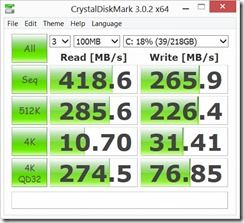
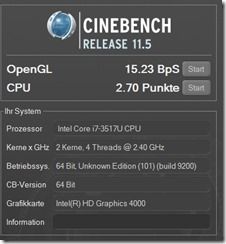
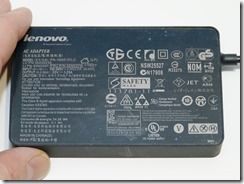










Speaking from an owner’s perspective.
Performance: I can’t vouch for your performance claim. Having the almost exact setup but with 128GB SSD, it performs slower. Other earlier reviews also stated the same.
In advanced power options, it states that the CPU is set at 15W. Although cTDP seemed like a fixed setting option, I guess there’s room for some adjustments by the manufacturers. The 15W TDP limits the performance.
Video playback and battery life: While it can handle 1080p videos well, you’ll realistically only be using it on Youtube, because you aren’t going to store lots of videos on the SSD. On Balanced setting, the device uses about 9W playing local standard definition videos, which means it gets little over 5 hours of battery life.
Gaming and battery life: Balanced setting will get it playable in League of Legends on its default, 1920×1080(lower resolutions aren’t feasible for various reasons), with settings mostly on high. I reckon it’ll last little over 2.5 hours.
Starcraft 2 plays on medium 1920×1080 for little over 2 hours.
Idle power use and Windows 8: It seems these Windows 8 based systems are using somewhat more power than Windows 7 systems. It measured 4.7W screen off, WiFi/Sound On. Putting the display on low brightness on idle only added 1W.
Battery life in general: There’s still bit of times where battery life and power use can be unpredictable. Sometimes the fan will spin right out of idle for no reason, and even the power use would be slightly higher than others. Reboot fixes it, but plugging it back in later to charge battery often causes it to come back.
WiFi performance is not that good, especially in power saver mode. Often on waking up, I need to manually connect to get access.
Tablet mode and form factor: I like the flip screen form factor. You don’t need the Yoga 13 for “presentation” mode when the XPS 12 can do the same much easier(with the caveat that you need to first orient the screen to be upright position in “presentation” mode before locking it. The Dell customized graphics driver simply orients it to correct position once you go back to Laptop mode).
Also, if you don’t want to mess up the keyboard while watching videos, or you just want it close to you, I simply flip the display and position the screen at an angle I like. That’s very useful.